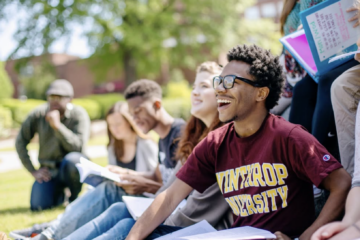The Winthrop University administration has been the target of quite a stir regarding its treatment of students with disabilities.
During the summer, Winthrop often will limit access to elevators and other inter-ability spaces in order to do maintenance and routine functional checks. This is not necessarily an issue, as there are not too many students on campus during the summer. However, Winthrop seemingly did not take the start of the academic year into account, as many places on campus are not fully accessible.
In Withers, Winthrop’s home base for education majors, the main elevator did not work until late August. This caused issues with regards to students being able to access the upper floors – especially Plowden Auditorium. Even though it is currently active, it is not running smoothly.
Withers is not the only campus building where elevators are not fully operational. Dormitory buildings – specifically Richardson – have a reputation for the elevators not working or being indefinitely “under maintenance.” This can cause issues with students getting to and from classes on time, or even being able to access their own bedroom. When the elevators in dormitories are not operational, this can also prohibit students with mobility issues from doing their laundry, as this can be their only way to access the building’s basement.
Accessibility limitations are not just limited to elevators being shoddy. Emergency call centers – tall pillars indicated by blue lights that are used to alert emergency services – are known for not working properly. While this can cause issues with emergencies regarding sexual assault, it can also determine the outcome of medical emergencies. When these call centers are disconnected, students who may need immediate medical assistance are put in danger.
Visually limited students are also put at risk on Winthrop’s campus. The crosswalk signs that lead to Dacus Library are equipped with auditory indicators to help students with limited vision. An automated voice tells students when it is safe to cross the street and counts down the seconds until the light changes. It also emits a beeping sound so that students can find their way to these landmarks. However, many of these crosswalk signs no longer work. Some of their buttons are stuck, so students cannot indicate their need to cross. This also prohibits students from hearing the necessary auditory cues, potentially leading to a student walking into traffic.
An editor for the Johnsonian who wishes to remain anonymous is outraged that Winthrop no longer seems to place importance on creating an accessible campus. “I live with limitations to my vision, hearing, and mobility. When I am required to climb stairs, I am placing myself in very real danger. I do not have enough depth perception to see individual steps,” the editor said at a recent staff meeting. “If I want to cross the street, there is not enough auditory input for me to safely do so at certain crosswalks. Is my life and education less valuable than students without disabilities?”
According to the Americans with Disabilities Act (ADA), Winthrop is not adequately providing access to its buildings. Per ADA’s clause 36.2, “a public accommodation shall afford services, facilities, privileges, advantages, and accommodations to an individual with a disability in the most integrated setting appropriate to the needs of the individual.” In layman’s terms, Winthrop University needs to give students every opportunity to succeed, whether that is academic accommodations or the ability to enter a building.
ADA’s clause 36.2 also mentions that public spaces need to ensure that their facilities are up to date and fully functional. “A public accommodation shall maintain in operable working condition those features of facilities and equipment that are required to be readily accessible to and usable by persons with disabilities.” If crosswalk signs and elevators do not count as equipment and facilities for people with disabilities, then what does?
Lyn Horton, the Johnsonian’s podcast editor, is concerned with the state of Winthrop’s sidewalks and ramps. “I have been wondering since freshman year how they expect wheelchair/walker users to reasonably get around campus,” Horton said during a previous interview.
This is a reasonable query, as Winthrop’s walkways are cracked and have been seemingly left to the elements.
Winthrop University’s Office of Accessibility has claimed that they are dedicated to creating an equitable environment for all students. While this is specific to academic accommodations, this should expand to all aspects of campus life. How are we as students supposed to feel welcome and valued if gaining access to buildings is an uphill battle?



